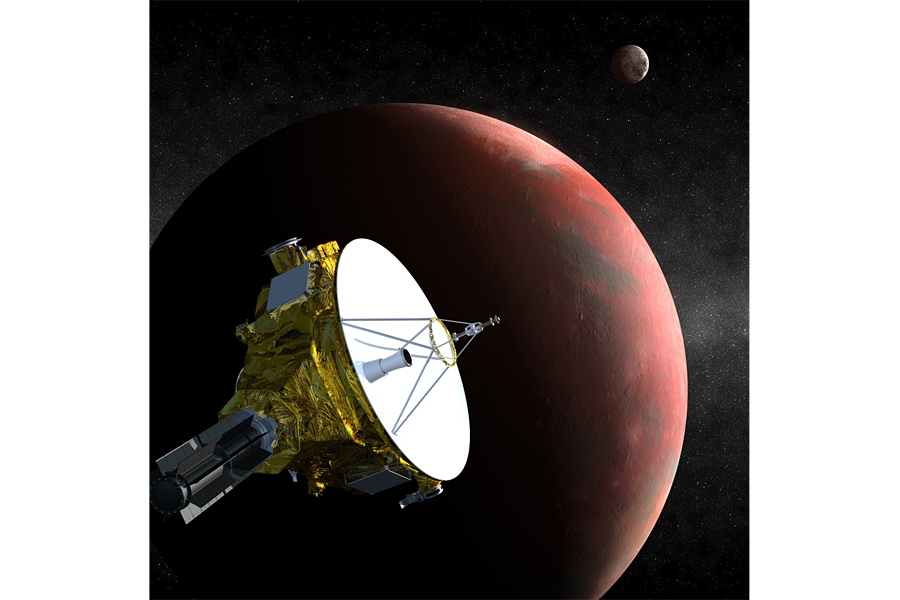Five Pluto mysteries that NASA's New Horizons spacecraft could solve
Loading...
Having traveled nearly three billion miles, the space probe on its way to explore the edges of our solar system, has awoken from hibernation for the final time and is now about 7 months away from its closest approach to Pluto.
The American astronomer Clyde Tombaugh discovered Pluto more than seven decades ago, but his discovery has not yet been visited by a spacecraft. Pluto is distant and small – so small that in 2006 the International Astronomical Union reclassified it as a "dwarf planet" – so that even a halfway decent view requires massive telescopes like the Hubble.
NASA scientists have been waiting nearly nine years since New Horizons's launch, but they'll have to wait at least another month, when the spacecraft will start observing Pluto, to try to answer some of the questions about the dwarf planet that have puzzled scientists since its discovery.
1) How many moons does Pluto actually have? And why does it matter?
Before New Horizons launched, scientists knew of three moons orbiting Pluto. Now the number stands at five, but there could be more. Getting better visuals of Pluto's satellites can help scientists more accurately calculate both the mass and density of the dwarf planet. As for the whole system, knowing how many moons are present can shed light on its origins.
2) What is Pluto's surface made of?
Scientists know that Pluto's surface includes nitrogen, carbon monoxide, methane, and water ices. This could mean that Pluto has a thick layer of nitrogen ice at its surface. The hardness of its surface can determine whether Pluto can stand up to hits by other objects in the Kuiper Belt – a disk of icy dwarf orbiting past Neptune – or if craters would form upon impact. And for scientists to fully understand what level of bombardment bodies in our outer solar system, like Pluto, faced during their history, they need to know if impacts with other bodies would leave any mark.
"There could even be liquid nitrogen on the surface, which could smooth out any impact craters," Alan Stern, one of the mission's principal investigators from Southwest Research Institute, told TIME.
3) What's up with Pluto being a double planet?
Yes - Pluto actually has a companion. Discovered in 1978, Charon is one of Pluto's moons but is so large that the pair is considered a binary system. Some scientists believe that at some point Pluto and another one of the icy bodies swirling through Kuiper crashed into one another and that the leftover debris from the collision coalesced over time, forming Charon. The New Horizons mission may allow astronomers to determine just how Pluto's system, with its second planet and several moons, could form.
4) Does Pluto have seasons?
Because of Pluto's peculiar orbit and the fact that its north pole seems to be tipped on its side, surface temperatures vary considerably. Most scientists believe that when Pluto is at its closest distance from the Sun, temperatures rise and form a gaseous atmosphere, but as it gets farther away, that atmosphere may freeze and precipitate to the dwarf's surface. This phenomenon of intense seasonal changes may be unlike any planet in our solar system, but astronomers don't know just yet what happens as Pluto orbits the Sun.
5) Is the Pluto system just the first glimpse of a whole lot more?
Astronomers have already partly figured out this question, and the general answer is yes. But scientists know almost nothing about the extent of the Kuiper belt – even whether the icy bodies that make up the belt should be counted in billions or trillions.
"For decades we thought Pluto was this odd little body on the planetary outskirts," said Hal Weaver, New Horizons Project Scientist at the Johns Hopkins University Applied Physics Laboratory, in a statement. "Now we know it's really a gateway to an entire region of new worlds in Kuiper Belt, and New Horizons is going to provide the first close-up look at them."
[Editor's note: An earlier version misstated the distance New Horizons was from its closest approach to Pluto.]








